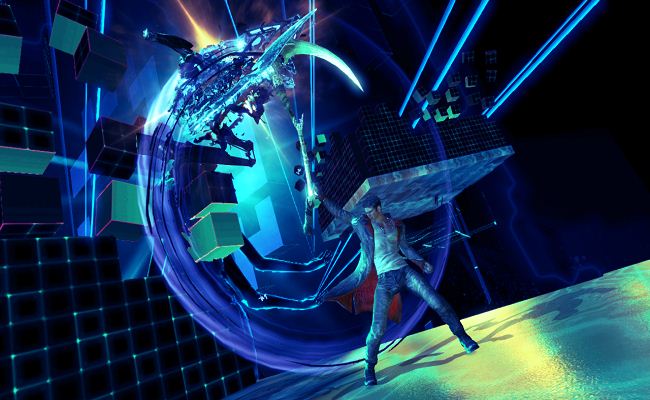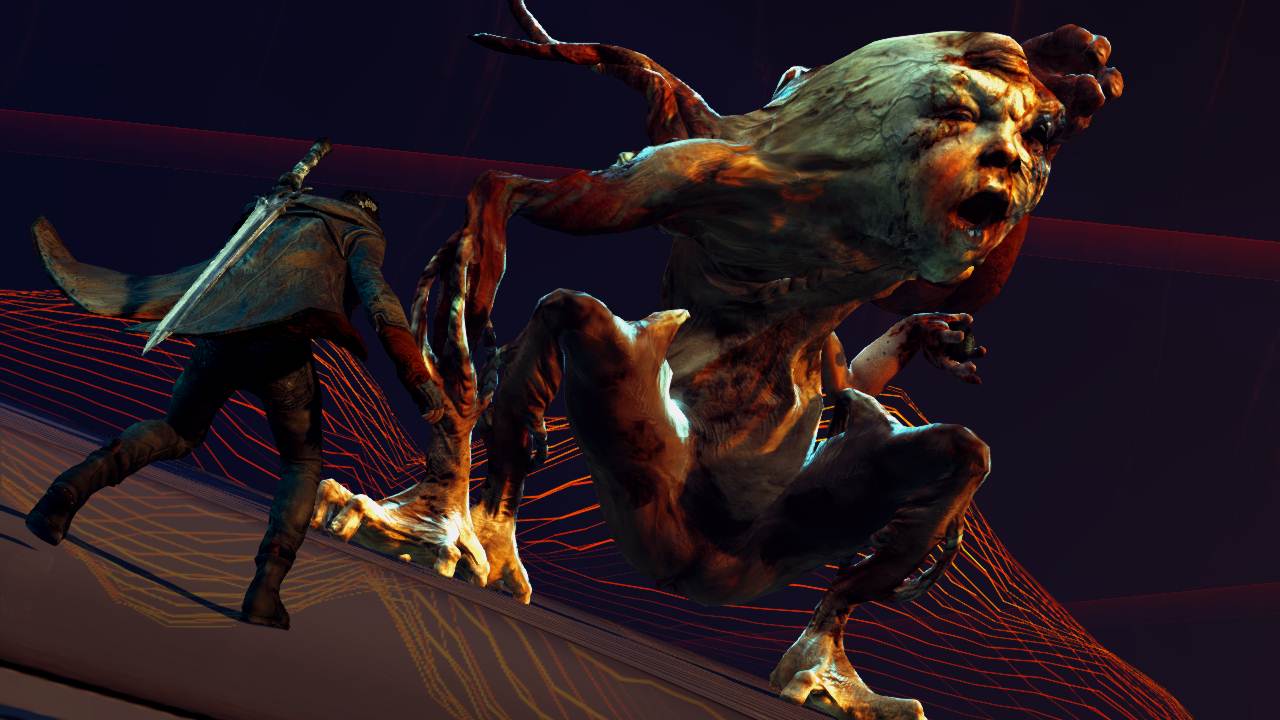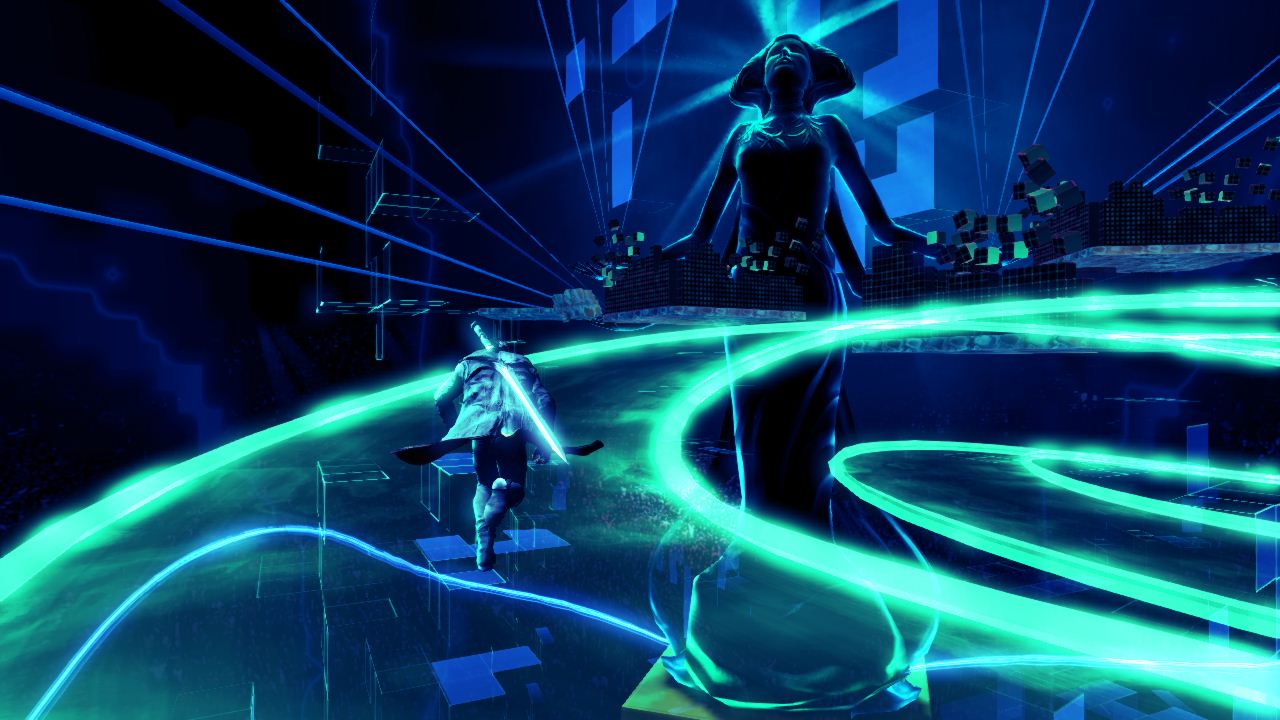A marmite franchise is made more palatable in a fresh bid to revitalise the Devil May Cry saga, but is the re-birth of one of gamings most iconic demon-hunters really a step in the right direction for both Capcom and Ninja Theory?
I’m of the mindset that Devil May Cry was in desperate need of change – and that mindset will naturally have a heavy impact on the shape of this review. Capcom’s prior entries to the gaming canon have been thoroughly successful, entertaining and unique romps through the gothic realms that Dante inhabits, but once that paint chips away I believe audiences really do need something new to look at (even if they’re reluctant at first to adapt). Therefore, without even playing DmC, I had instant respect for the bravery of Ninja Theory for taking this project on; attempting to revitalise and deliver results for one of the most respected gaming franchises of all time. And how have they fared? Well, the end result is a game that oozes with style, substance and absurd self confidence – brimming with insane enemy encounters and no-holds-barred combat. Yet, like most oozy, insane, stylish creations the game never really excels in any one field and subsequently Capcom deliver a slightly watered down experience that may alienate some hardcore fans of the series. That said, the creative direction could easily excite some hardcore fans of the series – and that’s the gamble that really lies with you the consumer.
DmC’s narrative is relatively straightforward: after being attacked by a Hunter Demon, the 21st Century Andrew Garfield-like Dante awakes with a hangover in a strange place called Limbo City. Coming to turns with his ever-changing, hostile surroundings, Dante attempts to defend himself from revolting creatures that attempt to kill him on a regular basis. Actually, writing that – doesn’t that sound uncannily like Silent Hill 2? Apart from the Andrew Garfield bit… It’s certainly not video gaming Shakespeare, but it works well here and offers audiences plenty of opportunities to delve deeper into both our whimsical protagonists’ past and haunting future; felling the iconic antagonist Mundus (previously seen in the original Devil May Cry – now how’s that for a nice slice of fan-service?).
Visually, the game is absolutely stunning. From the subtlety of the effective lens flare to the intricate detail on the faces of the grimly lurid demonic creatures that hunt Dante, DmC offers gamers a wide array of painterly-like settings to explore in a world inspired by wonderful architecture, gothic iconography and contemporary, crisp design. While we expect nothing less from our graphics in this age of gaming, the beauty of DmC comes from the intelligent blending of the original DmC heritage with the experiences drawn on by the multi-talented Ninja Theory. After finding commercial success with Enslaved: Odyssey to the West (a game that again pushed the boundaries of aesthetics in ways reminiscent of the Uncharted ilk) it seems Ninja Theory attempted to draw heavily on that influence in order to make DmC as good-looking as it could be. It’s always exciting to see the universe of Limbo City (a place-name which accurately summarises the sum of its parts) constantly shift its perspective; the terrain altering as you travel around in order to make life difficult for Dante. A simple task like walking down a road can often turn into a straight-up war zone as the ground twists and all manners of evil emerge to attack you when you least expect it – but it’s this consistency which sparks the real adrenaline inside you as you progress through the well-paced campaign.
Gameplay is solid and definitely doesn’t stray too drastically from the formula already embedded in the Devil May Cry franchise. The game rewards intelligent combat combos with highly glamourised attacks that flow like simple acrobatic beats as they unfold on your screen, however there is a steep learning curve that some gamers may find too challenging if they aspire to master the upper tear of the combat hierarchy. Like most games, DmC rewards dedication and if you have the patience to pull off slick combinations (with a bit of luck not getting mowed down while attempting them) then you’ll be in for a visual treat as Dante tears apart hoards of enemies for your delectation and delight. Boss battles aren’t as creative as they could be, in fact they even have a whiff of Lollipop Chainsaw about them – with particular enemies being characterised by their distinct vulgarities and their subsequent boss fights relying heavily upon that characterisation. While we’ve not really advanced from the early days of memorising a boss attack pattern, learning how to defend yourself and then striking at the right moments – these climactic fights are generally entertaining, engaging and can often draw a few laughs (which may not necessarily work for the serious gamer but definitely delights the casual.
In conclusion, DmC Devil May Cry may not necessarily be the sequel that everybody wanted right now, but its without a doubt an injection of fury, pace and style that the series desperately needed. Dante is taken in some new, interesting directions and surviving in Limbo City is never an easy task when the world constantly moves beneath your feet. You’ll have your work cut out for you adjusting to the combat and character behaviour but stick with it, let yourself go and you’ll be in for a roller coaster ride of high-octane battles, dark humour and gorgeous animation. We couldn’t recommend this enough! I guess you could say that Dante’s certainly reached his “peak”…
What do you think? Let us know in the comments section below!




0 Comments